Mind Control Theories & Techniques Used By Mass Media
Mind Control Theories and Techniques used by Mass Media
Posted by sakerfa on May 6, 2010
(VigilantCitizen) – Mass media is the most powerful tool used by the ruling class to
manipulate the masses. It shapes and molds opinions and attitudes and
defines what is normal and acceptable. This article looks at the
workings of mass media through the theories of its major thinkers, its
power structure and the techniques it uses, in order to understand its
true role in society.

- Image source deesillustration.com
Most of the articles on this site discuss occult symbolism found in objects
of popular culture. From these articles arise many legitimate questions
relating to the purpose of those symbols and the motivations of those
who place them there, but it is impossible for me to provide
satisfactory answers to these questions without mentioning many other
concepts and facts. I’ve therefore decided to write this article to
supply the theoretical and methodological background of the analyzes
presented on this site as well as introducing the main scholars of the
field of mass communications. Some people read my articles and think
I’m saying “Lady Gaga wants to control our minds”. That is not the
case. She is simply a small part of the huge system that is the mass
media.
Programming Through Mass Media
Mass media are media forms designed to reach the largest audience possible. They
include television, movies, radio, newspapers, magazines,
books, records, video games and the internet. Many studies have been
conducted in the past century to measure the effects of mass media on
the population in order to discover the best techniques to influence
it. From those studies emerged the science of Communications, which is
used in marketing, public relations and politics. Mass communication is
a necessary tool the insure the functionality of a large democracy; it
is also a necessary tool for a dictatorship. It all depends on its
usage.
In the 1958 preface for A Brave New World, Aldous Huxley paints a rather grim portrait of society. He believes it
is controlled by an “impersonal force”, a ruling elite, which
manipulates the population using various methods.
“Impersonal forces over which we have almost no control seem to be pushing us all in the direction of the Brave New Worldian nightmare; and this
impersonal pushing is being consciously accelerated by representatives
of commercial and political organizations who have developed a number
of new techniques for manipulating, in the interest of some minority,
the thoughts and feelings of the masses.”
- Aldous Huxley, Preface to A Brave New World
His bleak outlook is not a simple hypothesis or a paranoid delusion. It is a
documented fact, present in the world’s most important studies on mass
media. Here are some of them:
Elite Thinkers
Walter Lippmann
Walter Lippmann, an American intellectual, writer and two-time Pulitzer Prize
winner brought forth one of the first works concerning the usage of
mass media in America. In Public Opinion (1922), Lippmann
compared the masses to a “great beast” and a “bewildered herd” that
needed to be guided by a governing class. He described the ruling elite
as “a specialized class whose interests reach beyond the locality.”
This class is composed of experts, specialists and bureaucrats.
According to Lippmann, the experts, who often are referred to as
“elites,” are to be a machinery of knowledge that circumvents the
primary defect of democracy, the impossible ideal of the “omnicompetent
citizen.” The trampling and roaring “bewildered herd” has its function:
to be “the interested spectators of action,” i.e. not participants. Participation is the duty of “the responsible man”, which is not the regular citizen.
Mass media and propaganda are therefore tools that must be used by the elite to
rule the public without physical coercion. One important concept
presented by Lippmann is the “manufacture of consent”, which is, in
short, the manipulation of public opinion to accept the elite’s agenda.
It is Lippmann’s opinion that the general public is not qualified to
reason and to decide on important issues. It is therefore important for
the elite to decide ”for its own good” and then sell those decisions to
the masses.
“That the manufacture of consent is capable of great refinements no one, I think, denies. The process by which public opinions arise is certainly no less intricate than it has
appeared in these pages, and the opportunities for manipulation open to
anyone who understands the process are plain enough. . . . as a result
of psychological research, coupled with the modern means of
communication, the practice of democracy has turned a corner. A
revolution is taking place, infinitely more significant than any
shifting of economic power. . . . Under the impact of propaganda, not
necessarily in the sinister meaning of the word alone, the old
constants of our thinking have become variables. It is no longer
possible, for example, to believe in the original dogma of democracy;
that the knowledge needed for the management of human affairs comes up
spontaneously from the human heart. Where we act on that theory we
expose ourselves to self-deception, and to forms of persuasion that we
cannot verify. It has been demonstrated that we cannot rely upon
intuition, conscience, or the accidents of casual opinion if we are to
deal with the world beyond our reach.”
–Walter Lippmann, Public Opinion
It might be interesting to note that Lippmann is one of the founding fathers of the
Council on Foreign Relations (CFR), the most influential foreign policy
think tank in the world. This fact should give you a small hint of the
mind state of the elite concerning the usage of media.
“Political and economic power in the United States is concentrated in the hands of a “ruling elite” that controls most of U.S.-based multinational
corporations, major communication media, the most influential
foundations, major private universities and most public utilities.
Founded in 1921, the Council of Foreign Relations is the key link
between the large corporations and the federal government. It has been
called a “school for statesmen” and “comes close to being an organ of
what C. Wright Mills has called the Power Elite – a group of men,
similar in interest and outlook shaping events from invulnerable
positions behind the scenes. The creation of the United Nations was a
Council project, as well as the International Monetary Fund and the
World Bank.”
- Steve Jacobson, Mind Control in the United States
Some current members of the CFR include David Rockefeller, Dick Cheney, Barack
Obama, Hilary Clinton, mega-church pastor Rick Warren and the CEOs of
major corporations such as CBS, Nike, Coca-Cola and Visa.
Carl Jung
Carl Jung is the founder of analytical psychology (also known an Jungian
psychology), which emphasizes understanding the psyche by exploring
dreams, art, mythology, religion, symbols and philosophy. The Swiss
therapist is at the origin of many psychological concepts used today
such as the Archetype, the Complex, the Persona, the
Introvert/Extrovert and Synchronicity. He was highly influenced by the
occult background of his family. Carl Gustav, his grandfather, was an
avid Freemason (he was Grand Master) and Jung himself discovered that
some of his ancestors were Rosicrucians. This might explain his great
interest in Eastern and Western philosophy, alchemy, astrology and
symbolism. One of his most important (and misunderstood) concept was
the Collective Unconscious.
“My thesis, then, is as follows: In addition to our immediate consciousness, which is of a thoroughly personal nature and which we
believe to be the only empirical psyche (even if we tack on the
personal unconscious as an appendix), there exists a second psychic
system of a collective, universal, and impersonal nature which is
identical in all individuals. This collective unconscious does not
develop individually but is inherited. It consists of pre-existent
forms, the archetypes, which can only become conscious secondarily and
which give definite form to certain psychic contents.”
- Carl Jung, The Concept of the Collective Unconscious
The collective unconscious transpires through the existence of similar
symbols and mythological figures in different civilizations. Archetypal symbols seem
to be embedded in our collective subconscious, and, when exposed to
them, we demonstrate natural attraction and fascination. Occult symbols
can therefore exert a great impact on people, even if many individuals
were never personally introduced to the symbol’s esoteric meaning. Mass
media thinkers, such as Edward D. Bernays, found in this concept a
great way to manipulate the public’s personal and collective
unconscious.
Edward Bernays
Edward Bernays is considered to be the “father of public relations” and used
concepts discovered by his uncle Sigmund Freud to manipulate the public
using the subconscious. He shared Walter Lippmann’s view of the general
population by considering it irrational and subject to the “herd
instinct”. In his opinion, the masses need to be manipulated by an
invisible government to insure the survival of democracy.
“The conscious and intelligent manipulation of the organized habits and opinions of the masses is an important element in democratic society.
Those who manipulate this unseen mechanism of society constitute an
invisible government which is the true ruling power of our country.We are governed, our minds are molded, our tastes formed, our ideas suggested, largely by men we have never heard of. This is a logical result of the
way in which our democratic society is organized. Vast numbers of human
beings must cooperate in this manner if they are to live together as a
smoothly functioning society.
Our invisible governors are, in many cases, unaware of the identity of their fellow members in the inner cabinet.”
- Edward Bernays, Propaganda
Bernay’s trailblazing marketing campaigns profoundly changed the functioning of
American society. He basically created “consumerism” by creating a
culture wherein Americans bought for pleasure instead of buying for
survival. For this reason, he was considered by Life Magazine to be in the Top 100 most influential Americans of the 20th century.
Harold Lasswell
In 1939-1940, the University of Chicago was the host of a series of secret seminars
on communications. These think tanks were funded by the Rockefeller
foundation and involved the most prominent researchers in the fields of
communications and sociological studies. One of these scholars was
Harold Lasswell, a leading American political scientist and
communications theorist, specializing in the analysis of propaganda. He
was also of the opinion that a democracy, a government ruled by the
people, could not sustain itself without a specialized elite shaping
and molding public opinion through propaganda.
In his Encyclopaedia of the Social Sciences, Lasswell explained that when elites lack the requisite force to compel obedience, social managers must turn to “a whole new technique of control, largely through propaganda.” He added the conventional justification: we must recognize the “ignorance and stupidity [of] … the masses and not succumb to democratic dogmatisms about men being the best judges of their own interests.”
Lasswell extensively studied the field of content analysis in order to
understand the effectiveness of different types of propaganda. In his
essay Contents of Communication, Lasswell explained that, in
order to understand the meaning of a message (i.e. a movie, a speech, a
book, etc.), one should take into account the frequency with which
certain symbols appear in the message, the direction in which the
symbols try to persuade the audience’s opinion, and the intensity of
the symbols used.
Lasswell was famous for his media analysis model based on:
Who (says) What (to) Whom (in) What Channel (with) What Effect
By this model, Lasswell indicates that in order to properly analyze a media product, one must look at who produced the product (the people who ordered its creation), who was it aimed at (the target audience) and what were the desired effects of this product (to inform, to convince, to sell, etc.) on the audience.
Using a Rihanna video as an example, the analysis would be as follows: WHO
PRODUCED: Vivendi Universal; WHAT: pop artist Rihanna; TO WHOM:
consumers between the ages of 9 and 25; WHAT CHANNEL: music video; and
WHAT EFFECT: selling the artist, her song, her image and her message.
The analyzes of videos and movies on The Vigilant Citizen place a great importance on the “who is behind” the messages
communicated to the public. The term “Illuminati” is often used to
describe this small elite group covertly ruling the masses. Although
the term sounds quite caricatured and conspiratorial, it aptly
describes the elite’s affinities with secret societies and occult
knowledge. However, I personally detest using the term “conspiracy
theory” to describe what is happening in the mass media. If all the
facts concerning the elitist nature of the industry are readily
available to the public, can it still be considered a “conspiracy
theory”?
There used to be a variety of viewpoints, ideas and opinions in popular culture. The
consolidation of media corporations has, however, produced a
standardization of the cultural industry. Ever wondered why all recent
music sounds the same and all recent movies look the same? The
following is part of the answer:
Media Ownership
As depicted in the graph above, the number of corporations owning the majority of
U.S. media outlets went from 50 to 5 in less than 20 years. Here are
the top corporations evolving around the world and the assets they own.
“A list of the properties controlled by AOL Time Warner takes ten typed pages listing 292 separate companies and subsidiaries. Of these,
twenty-two are joint ventures with other major corporations involved in
varying degrees with media operations. These partners include 3Com,
eBay, Hewlett-Packard, Citigroup, Ticketmaster, American Express,
Homestore, Sony, Viva, Bertelsmann, Polygram, and Amazon.com. Some of
the more familiar fully owned properties of Time Warner include
Book-of-the-Month Club; Little, Brown publishers; HBO, with its seven
channels; CNN; seven specialized and foreign-language channels; Road
Runner; Warner Brothers Studios; Weight Watchers; Popular Science; and
fifty-two different record labels.”
- Ben Bagdikan, The New Media Monopoly
AOL Time Warner owns:
- 64 magazines, including Time, Life, People, MAD Magazine and DC Comics
- Warner Bros, New Line and Fine Line Features in cinema
- More than 40 music labels including Warner Bros, Atlantic and Elektra
- Many television networks such as WB Networks, HBO, Cinemax, TNT, Cartoon Network and CNN
- Madonna, Sean Paul, The White Stripes
- CBS, MTV, MTV2, UPN, VH1, Showtime, Nickelodeon, Comedy Central, TNN, CMT and BET
- Paramount Pictures, Nickelodeon Movies, MTV Films
- Blockbuster Videos
- 1800 screens in theaters through Famous Players
“Disney ownership of a hockey team called The Mighty Ducks of Anaheim does not begin to describe the vastness of the kingdom. Hollywood is still its
symbolic heart, with eight movie production studios and distributors:
Walt Disney Pictures, Touchstone Pictures, Miramax, Buena Vista Home
Video, Buena Vista Home Entertainment, Buena Vista International,
Hollywood Pictures, and Caravan Pictures.The Walt Disney Company controls eight book house imprints under Walt Disney Company Book Publishing and ABC Publishing Group; seventeen magazines;
the ABC Television Network, with ten owned and operated stations of its
own including in the five top markets; thirty radio stations, including
all the major markets; eleven cable channels, including Disney, ESPN
(jointly), A&E, and the History Channel; thirteen international
broadcast channels stretching from Australia to Brazil; seven
production and sports units around the world; and seventeen Internet
sites, including the ABC group, ESPN.sportszone, NFL.com, NBAZ.com, and
NASCAR.com. Its five music groups include the Buena Vista, Lyric
Street, and Walt Disney labels, and live theater productions growing
out of the movies The Lion King, Beauty and the Beast, and King David.”
- Ibid
The Walt Disney Company owns:
- ABC, Disney Channel, ESPN, A&E, History Channel
- Walt Disney Pictures, Touchstone Pictures, Hollywood Pictures, Miramax Film Corp., Dimension and Buena Vista International
- Miley Cyrus/ Hannah Montana, Selena Gomez, Jonas Brothers
Vivendi Universal owns:
- 27% of US music sales, labels include: Interscope, Geffen, A&M, Island, Def Jam, MCA, Mercury, Motown and Universal
- Universal Studios, Studio Canal, Polygram Films, Canal +
- Numerous internet and cell phone companies
- Lady Gaga, The Black Eyed Peas, Lil Wayne, Rihanna, Mariah Carey, Jay-Z
Sony owns:
- Columbia Pictures, Screen Gems, Sony Pictures Classics
- 15% of US Music sales, labels include Columbia, Epic, Sony, Arista, Jive and RCA Records
- Beyonce, Shakira, Michael Jackson, Alicia Keys, Christina Aguilera
A limited number of actors in the cultural industry means a limited amount of
viewpoints and ideas making their way to the general public. It also
means that a single message can easily saturate all forms of media to
generate consent (i.e. “there are weapons of mass destruction in Iraq”).
The Standardization of Human Thought
The merger of media companies in the last decades generated a small oligarchy of
media conglomerates. The TV shows we follow, the music we listen to,
the movies we watch and the newspapers we read are all produced by FIVE
corporations. The owners of those conglomerates have close ties with
the world’s elite and, in many ways, they ARE the elite. By owning all
of the possible outlets having the potential to reach the masses, these
conglomerates have the power to create in the minds of the people a
single and cohesive world view, engendering a “standardization of human
thought”.
Even movements or styles that are considered marginal are, in fact,
extensions of mainstream thinking. Mass medias produce their own rebels
who definitely look the part but are still part of the establishment
and do not question any of it. Artists, creations and ideas that do not
fit the mainstream way of thinking are mercilessly rejected and
forgotten by the conglomerates, which in turn makes them virtually
disappear from society itself. However, ideas that are deemed to be
valid and desirable to be accepted by society are skillfully marketed
to the masses in order to make them become self-evident norm.
In 1928, Edward Bernays already saw the immense potential of motion pictures to standardize thought:
“The American motion picture is the greatest unconscious carrier of propaganda in the world today. It is a great distributor for ideas and
opinions. The motion picture can standardize the ideas and habits of a
nation. Because pictures are made to meet market demands, they reflect,
emphasize and even exaggerate broad popular tendencies, rather than
stimulate new ideas and opinions. The motion picture avails itself only
of ideas and facts which are in vogue. As the newspaper seeks to purvey
news, it seeks to purvey entertainment.”
– Edward Bernays, Propaganda
These facts were flagged as dangers to human freedom in the 1930’s by thinkers of
the school of Frankfurt such as Theodor Adorno and Herbert Marcuse.
They identified three main problems with the cultural industry. The
industry can:
- reduce human beings to the state of mass by hindering the development of emancipated individuals, who are capable of making rational decisions;
- replace the legitimate drive for autonomy and self-awareness by the safe laziness of conformism and passivity; and
- validate the idea that men actually seek to escape the absurd and cruel world in
which they live by losing themselves in a hypnotic state
self-satisfaction.
The notion of escapism is even more relevant today with advent of online video games, 3D
movies and home theaters. The masses, constantly seeking
state-of-the-art entertainment, will resort to high-budget products
that can only be produced by the biggest media corporations of the
world. These products contain carefully calculated messages and symbols
which are nothing more and nothing less than entertaining propaganda.
The public have been trained to LOVE its propaganda to the extent that
it spends its hard-earned money to be exposed to it. Propaganda (used
in both political, cultural and commercial sense) is no longer the
coercive or authoritative communication form found in dictatorships: it
has become the synonym of entertainment and pleasure.
“In regard to propaganda the early advocates of universal literacy and a free press envisaged only two possibilities: the propaganda might be
true, or it might be false. They did not foresee what in fact has
happened, above all in our Western capitalist democracies — the
development of a vast mass communications industry, concerned in the
main neither with the true nor the false, but with the unreal, the more
or less totally irrelevant. In a word, they failed to take into account
man’s almost infinite appetite for distractions.”
– Aldous Huxley, Preface to A Brave New World
A single piece of media often does not have a lasting effect on the human
psyche. Mass media, however, by its omnipresent nature, creates a
living environment we evolve in on a daily basis. It defines the norm
and excludes the undesirable. The same way carriage horses wear
blinders so they can only see what is right in front of them, the
masses can only see where they are supposed to go.
“It is the emergence of mass media which makes possible the use of propaganda techniques on a societal scale. The orchestration of press,
radio and television to create a continuous, lasting and total
environment renders the influence of propaganda virtually unnoticed
precisely because it creates a constant environment. Mass media
provides the essential link between the individual and the demands of
the technological society.”
– Jacques Ellul
One of the reasons mass media successfully influences society is due to the
extensive amount of research on cognitive sciences and human nature
that has been applied to it.
Manipulation Techniques
“Publicity is the deliberate attempt to manage the public’s perception of a subject. The subjects of publicity include people (for example,
politicians and performing artists), goods and services, organizations
of all kinds, and works of art or entertainment.”
The drive to sell products and ideas to the masses has lead to an unprecedented
amount of research on human behavior and on the human psyche. Cognitive
sciences, psychology, sociology, semiotics, linguistics and other
related fields were and still are extensively researched through
well-funded studies.
“No group of sociologists can approximate the ad teams in the gathering and processing of exploitable social data. The ad teams have billions to
spend annually on research and testing of reactions, and their products
are magnificent accumulations of material about the shared experience
and feelings of the entire community.”- Marshal McLuhan, The Extensions of Man
art of marketing is highly calculated and scientific because it must
reach both the individual and the collective consciousness. In
high-budget cultural products, a video is never “just a video,” Images,
symbols and meanings are strategically placed in order to generate a
desired effect.
“It is with knowledge of the human being, his tendencies, his desires, his needs, his psychic mechanisms, his automatisms as well as knowledge of
social psychology and analytical psychology that propaganda refines its
techniques.”
– Propagandes, Jacques Ellul (free translation)
generate an emotional and irrational response. If we always thought
rationally, we probably wouldn’t buy 50% of what we own. Babies and
children are constantly found in advertisements targeting women for a
specific reason: studies have shown that images of children trigger in
women an instinctual need to nurture, to care and to protect,
ultimately leading to a sympathetic bias towards the advertisement.
when triggered, this instinct can instantly overshadow any other
rational thoughts in our brain.
Subliminal Perception
happening? That is the goal of subliminal perception. The phrase
subliminal advertising was coined in 1957 by the US market researcher
James Vicary, who said he could get moviegoers to “drink Coca-Cola” and
“eat popcorn” by flashing those messages onscreen for such a short time
that viewers were unaware.
“Subliminal perception is a deliberate process created by communications technicians, by which you receive and respond to information and
instructions without being consciously aware of the instructions”
– Steve Jacobson, Mind Control in the United States
proves that creators believe in its powers. Recent studies have also
proven its effectiveness, especially when the message is negative.
” A team from University College London, funded by the Wellcome Trust, found that it [subliminal perception] was particularly good at
instilling negative thoughts. There has been much speculation about
whether people can process emotional information unconsciously, for
example pictures, faces and words,” said Professor Nilli Lavie, who led
the research. We have shown that people can perceive the emotional
value of subliminal messages and have demonstrated conclusively that
people are much more attuned to negative words.”
- Source
A famous example of subliminal messaging in political communications is in George Bush’s advertisement against Al Gore in 2000.
Right after the name of Gore is mentioned, the ending of the word “bureaucrats” – “rats” – flashes on the screen for a split second.
The discovery of this trickery caused quite a stir and, even if there are no laws
against subliminal messaging in the U.S., the advertisement was taken
off the air.
As seen in many articles on The Vigilant Citizen, subliminal and semi-subliminal messages are often used in movies and music videos to communicate messages and ideas to the viewers.
Desensitization
In the past, when changes were imposed on populations, they would take to the
streets, protest and even riot. The main reason for this clash was due
to the fact that the change was clearly announced by the rulers and
understood by the population. It was sudden and its effects could
clearly be analyzed and evaluated. Today, when the elite needs a part
of its agenda to be accepted by the public, it is done through
desensitization. The agenda, which might go against the public best
interests, is slowly, gradually and repetitively introduced to the
world through movies (by involving it within the plot), music videos
(who make it cool and sexy) or the news (who present it as a solution
to today’s problems). After several years of exposing the masses to a
particular agenda, the elite openly presents the concept the world and,
due to mental programming, it is greeted with general indifference and
is passively accepted. This technique originates from psychotherapy.
“The techniques of psychotherapy, widely practiced and accepted as a means of curing psychological disorders, are also methods of controlling
people. They can be used systematically to influence attitudes and
behavior. Systematic desensitization is a method used to dissolve
anxiety so the the patient (public) is no longer troubled by a specific
fear, a fear of violence for example. [...] People adapt to frightening
situations if they are exposed to them enough”.
– Steven Jacobson, Mind Control in the United States
and ultimately becomes in the minds of men an inevitability. A decade
ago, the public was being desensitized to war against the Arab world.
Today, the population is gradually being exposed to the existence of
mind control, of transhumanism and of an Illuminati elite. Emerging
from the shadows, those concepts are now everywhere in popular culture.
This is what Alice Bailey describes as the “externalization of the
hierarchy”: the hidden rulers slowly revealing themselves.
Occult Symbolism in Pop Culture
Contrarily to the information presented above, documentation on occult symbolism
is rather hard to find. This should not come as a surprise as the term
“occult”, literally means “hidden”. It also means “reserved to those in
the know” as it is only communicated to those who are deemed worthy of
the knowledge. It is not taught in schools nor is it discussed in the
media. It is thus considered marginal or even ridiculous by the general
population.
Occult knowledge is NOT, however, considered ridiculous in occult circles. It
is considered timeless and sacred. There is a long tradition of
hermetic and occult knowledge being taught through secret societies
originating from ancient Egyptians, to Eastern Mystics, to the Knights
Templar to modern day Freemasons. Even if the nature and the depth of
this knowledge was most probably modified and altered throughout the
centuries, mystery schools kept their main features, which are highly symbolic, ritualistic and metaphysical. Those
characteristics, which were an intricate part of
ancient civilizations, have totally been evacuated from modern society
to be replaced by pragmatic materialism. For this reason, there lies an
important gap of understanding between the pragmatic average person and
the ritualistic establishment.
“If this inner doctrine were always concealed from the masses, for whom a simpler code had been devised, is it not highly probable that the
exponents of every aspect of modern civilization – philosophic,
ethical, religious, and scientific-are ignorant of the true meaning of
the very theories and tenets on which their beliefs are founded? Do the
arts and sciences that the race has inherited from older nations
conceal beneath their fair exterior a mystery so great that only the
most illumined intellect can grasp its import? Such is undoubtedly the
case.”
- Manly P. Hall, Secret Teachings of All Ages
The “simpler code” devised for the masses used to be organized religions. It is now
becoming the Temple of the Mass Media and it preaches on a daily basis
extreme materialism, spiritual vacuosity and a self-centered,
individualistic existence. This is exactly the opposite of the
attributes required to become a truly free individual, as taught by all
great philosophical schools of thought. Is a dumbed-down population
easier to deceive and to manipulate?
“These blind slaves are told they are “free” and “highly educated” even as they march behind signs that would cause any medieval peasant to run
screaming away from them in panic-stricken terror. The symbols that
modern man embraces with the naive trust of an infant would be
tantamount to billboards reading, ‘This way to your death and
enslavement,’ to the understanding of the traditional peasant of
antiquity”
- Michael A. Hoffman II, Secret Societies and Psychological Warfare
In Conclusion
This article examined the major thinkers in the field of mass media, the media power
structure and the techniques used to manipulate the masses. I believe
this information is vital to the understanding of the “why” in the
topics discussed on The Vigilant Citizen. The “mass
population” versus “ruling class” dichotomy described in many articles
is not a “conspiracy theory” (again, I hate that term), but a reality
that has been clearly stated in the works of some of the 20th century’s
most influential men.
Lippmann, Bernays and Lasswell have all declared that the public are not fit to
decide their own fate, which is the inherent goal of democracy.
Instead, they called for a cryptocracy, a hidden government, a ruling
class in charge of the “bewildered herd.” As their ideas continue to be
applied to society, it is increasingly apparent that an ignorant
population is not an obstacle that the rulers must deal with: It is
something that is DESIRABLE and, indeed, necessary, to insure total
leadership. An ignorant population does not know its rights, does not
seek a greater understanding of issues and does not question
authorities. It simply follows trends. Popular culture caters to and
nurtures ignorance by continually serving up brain-numbing
entertainment and spotlighting degenerate celebrities to be idolized.
Many people ask me: “Is there a way to stop this?” Yes, there is. STOP
BUYING THEIR CRAP AND READ A BOOK.
“If a nation expects to be ignorant and free, it expects what never was and never will be.”
- Thomas Jefferson
Related Documentation
 Download “Propaganda” By Edward L. Bernays free E-book in pdf from knowledgefiles.com
Download “Propaganda” By Edward L. Bernays free E-book in pdf from knowledgefiles.com
Source: Vigilant Citizen
Possibly related posts: (automatically generated)
"Destroying the New World Order"
THANK YOU FOR SUPPORTING THE SITE!
Latest Activity
- Top News
- ·
- Everything
KILL THE MESSENGER - Hero Journalist Featurette - In Theaters Friday
A Masterclass Is Being Played Out For Those Who Have The Eyes To See
City of Joel - Official Trailer
© 2026 Created by truth.
Powered by
![]()
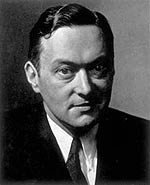
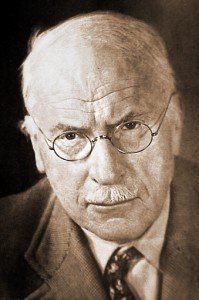
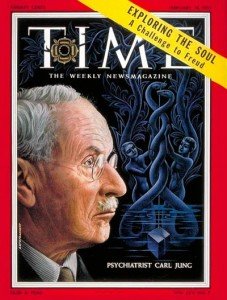
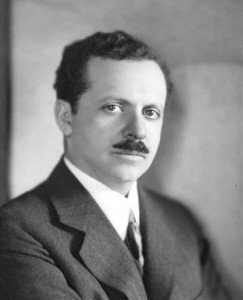
![lasswell[1]](http://vigilantcitizen.com/wp-content/uploads/2010/04/lasswell1.jpg)
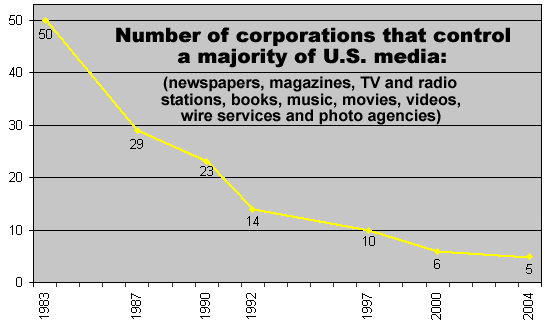





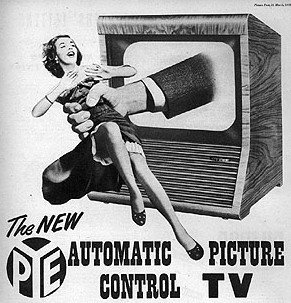




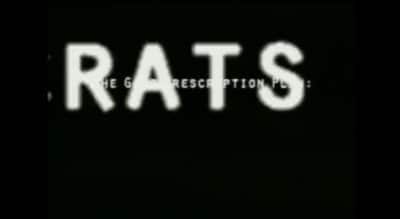


You need to be a member of 12160 Social Network to add comments!
Join 12160 Social Network